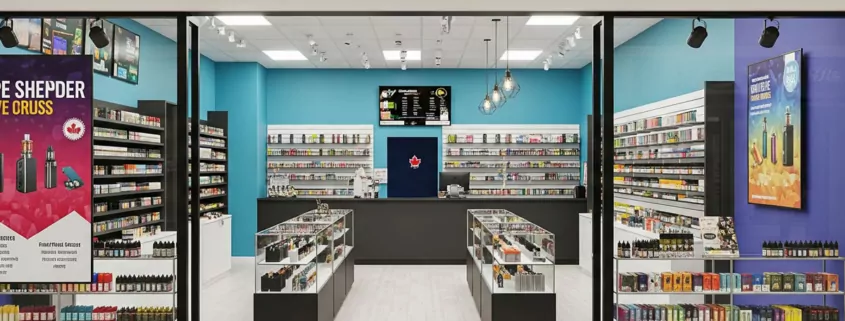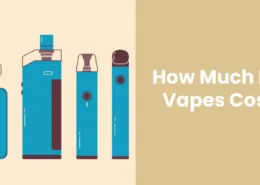How to Open a Vape Shop in Canada: A Step-by-Step Guide
The Canadian vaping market, projected to reach $3.8 billion by 2025, continues to be a dynamic and lucrative sector for entrepreneurs. As a leading international e-cigarette manufacturer, we’ve partnered with countless new business owners and have seen firsthand what it takes to succeed. Opening a vape shop in Canada is more than just a retail venture; it’s about entering a highly regulated industry that requires meticulous planning, a deep understanding of compliance, and a solid business strategy. This comprehensive guide provides a step-by-step roadmap for aspiring vape shop owners, covering everything from navigating the legal landscape and crafting a robust business plan to stocking your shelves and building a loyal customer base.
Step 1: Foundational Research and Understanding the Legal Landscape
Before a single dollar is spent, your first investment must be time. The Canadian vape industry is governed by a complex web of federal, provincial, and municipal regulations. A thorough understanding of this legal framework is non-negotiable.
Key Regulations to Understand:
- Federal Laws: Health Canada regulates vaping products under the Tobacco and Vaping Products Act (TVPA). This includes rules on manufacturing, product standards, packaging, labeling with health warnings, and restrictions on advertising and promotion, particularly anything deemed appealing to youth.
- Provincial Variations: Each province has its own set of rules that often go beyond federal mandates. For example, Ontario’s Smoke-Free Ontario Act governs where vaping is prohibited and sets specific rules for specialty vape stores. Age restrictions also vary, though most provinces have aligned with a minimum age of 19 or, in some cases, 18. You must research the specific laws of the province where you intend to operate.
- Municipal Bylaws: Cities can add another layer of regulation. Municipalities may have specific zoning bylaws that dictate where a vape shop can be located (e.g., minimum distance from schools), as well as unique business licensing requirements.
This initial research phase is critical. It will inform your business plan, location scouting, and product sourcing, ensuring you build your business on a compliant foundation.
Read more:
Vaping Laws in Canada – Everything You Need to Know (2023 version)
Step 2: Developing a Robust Business Plan
A comprehensive business plan is your blueprint for success. It’s not just a document for securing loans; it’s a strategic guide for every decision you’ll make. Your plan should include several critical elements:
Market and Competitor Analysis
Define your target market. Are you catering to adult smokers looking to switch, experienced hobbyists seeking high-end mods, or a general adult audience? Analyze your local competitors. What products do they offer? What are their pricing strategies and customer service reputations? Identifying a gap in the market or an area where you can excel (e.g., exceptional customer education, unique product selection) will be key to your differentiation.
Financial Planning and Budgeting
This is the heart of your business plan. You need to create realistic financial projections and a detailed budget. This should cover:
- Startup Costs: A detailed list of all one-time expenses, including renovations, fixtures, initial inventory, legal fees, and licensing. As we’ve detailed in our cost guide, this can range from CAD $50,000 to over $150,000.
- Operating Expenses: A monthly breakdown of recurring costs like rent, utilities, payroll, marketing, and inventory restocking.
- Revenue Projections: Conservative estimates of your expected sales for the first one to three years.
- Funding Strategy: Outline how you will finance your startup, whether through personal savings, small business loans, or investors. Banks and investors will require a solid business plan before considering funding.
Pro-Tip: Always include a contingency fund of at least 10-20% of your total startup budget to cover unforeseen expenses. Unexpected regulatory fees or construction delays can happen, and having a buffer is crucial.

Step 3: Securing a Location and Building Out Your Store
Your physical location is a critical factor that impacts foot traffic, brand perception, and your budget.
Location and Visibility Considerations
Seek out spaces with high visibility and foot traffic from your target demographic. Consider proximity to complementary businesses, but also be aware of local zoning laws that may restrict how close you can be to schools or community centers. Rental costs will be a major factor, varying significantly between prime downtown urban centers, suburban strip malls, and rural locations. Balance the cost of rent with the potential for customer traffic.
Lease Negotiation and Renovations
Before signing a lease, have a lawyer review it. Negotiate terms like lease length, renewal options, and a “tenant improvement allowance,” where the landlord contributes to the cost of your renovations. Renovations can be a major expense, ranging from CAD $5,000 to $20,000 or more for basic work like painting, flooring, and lighting. A full custom build-out can be significantly more. Your store’s design, including professional signage and quality fixtures like secure glass showcases and versatile shelving, should reflect your brand and create a welcoming environment for customers.
Step 4: Licensing, Permits, and Legal Formalities
Navigating the regulatory steps to legally operate is a crucial phase that requires careful attention to detail.
Choosing a Business Structure and Registering Your Name
You’ll need to choose a legal structure for your business (sole proprietorship, partnership, or corporation) and register your business name with the federal or provincial government. A corporation offers better liability protection but involves more paperwork and cost. Consulting with a lawyer and an accountant is highly recommended to make the best choice for your situation.
Obtaining Necessary Licenses and Permits
To operate your vape store legally, you must obtain several licenses and permits. The specific requirements vary by province and municipality, but they generally include:
- General Business License: Issued by your city or municipality, allowing you to operate a business in that location.
- Tobacco/Vaping Retailer Permit: Most provinces require a specific license to sell tobacco and/or vaping products. For example, in Toronto, you need a Vapour Product Retailer Licence. In Alberta, you apply for a Tobacco & Vaping Retailer license.
- Tax Registration: You must register with the Canada Revenue Agency (CRA) to collect and remit GST/HST and with your provincial government for provincial sales taxes and the specific vaping excise tax.
The license application process will involve submitting documentation, paying fees, and potentially passing a health and safety inspection.
Read more details of the licensing in different provinces:
Ecigator is one of the well-known vape brands spun off from FM Technology Co., Ltd, it’s an ISO-certified disposable vape manufacturer for OEMs, ODMs, and OBM since 2010. The founder team comes from top firms with more than 10 years of experience in the vaping industry and has devoted thousands of hours to providing users with a better and better experience.
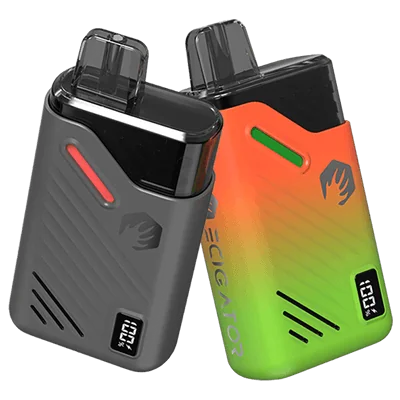
18K Disposable Pod Kit
Disposable Pod Kit – 18ml changeable pod with 650mAh rechargeable battery.
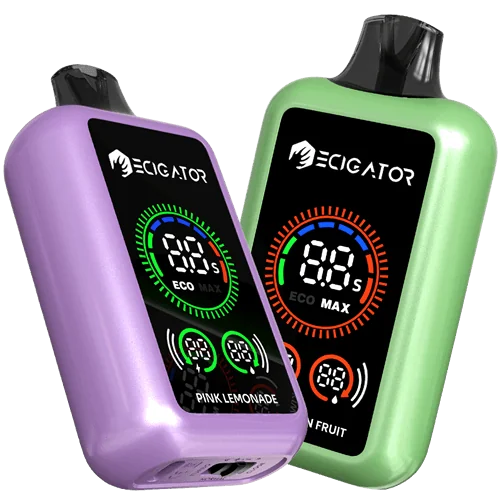
20K with Large Screen
20000 Puffs Disposable Vape with large screen. Normal and Boost working modes.
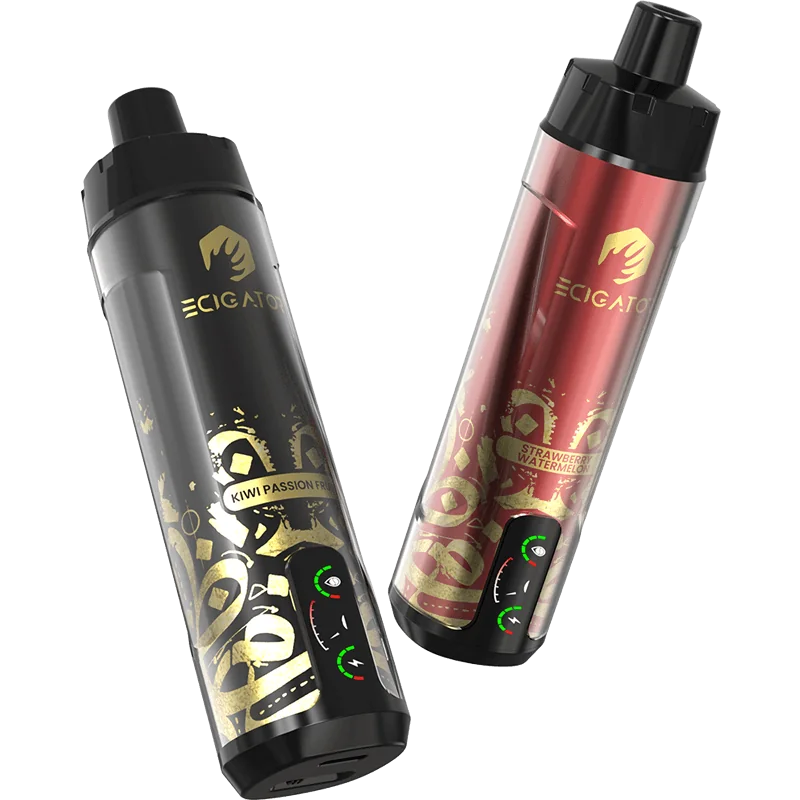
20K DTL Disposable
20K Puffs DTL(Directly to Lung) disposable vape with airflow control and screen.
Step 5: Inventory Management and Vendor Relations
Your product selection will define your store. Building strong relationships with reliable distributors and manufacturers is key.
Product Selection and Sourcing
Your inventory should include a wide range of products to cater to different customers:
- Vaporizers and Starter Kits: Offer a mix of simple, user-friendly starter kits for beginners and more advanced mods and pod systems for experienced vapers.
- E-Liquids (Vape Juice): Stock a diverse selection of flavors and nicotine strengths, including popular nicotine salt options. Ensure all products comply with Health Canada’s labeling and ingredient regulations.
- Batteries, Coils, and Accessories: These are essential repeat-purchase items. Stocking a good variety of replacement coils for the devices you sell is crucial for customer retention.
Manufacturer’s Insight: When selecting suppliers, prioritize those who can provide clear documentation of their product compliance with Canadian regulations, including ingredient lists and manufacturing standards. A reliable vape manufacturing partner will understand the nuances of the Canadian market, including the federal excise tax stamping requirements, and can help ensure your inventory is fully compliant, protecting you from regulatory risk.
Inventory Management
Use your Point of Sale (POS) system to track sales and manage your inventory effectively. Regularly review your stock to understand which products are selling well and which are not. This will help you make smarter purchasing decisions, avoid overstocking unpopular items, and ensure you always have your best-sellers available for your customers.
Step 6: Marketing and Growth Strategies
Once you’re ready to open, you need to attract customers. Marketing for vape shops in Canada is restricted, so you’ll need to be creative and compliant.
Building Your Brand and Online Presence
Invest in a professional brand identity, including a logo and store design. Create a user-friendly website that is optimized for search engines (SEO) so local customers can find you online. While direct advertising is limited, you can use your website and social media platforms (like Instagram and Facebook) to provide educational content about products (without making health claims) and to build a community around your brand.
Community Involvement and Customer Retention
Building a strong local reputation is invaluable.
- Customer Service: Train your staff to be knowledgeable, friendly, and helpful. Excellent customer service can be your biggest differentiator.
- Loyalty Programs: Implement a loyalty program to reward repeat customers and encourage them to keep coming back.
- Community Events: Consider participating in or hosting local events (where permitted) to increase your shop’s profile and show your commitment to the community.
Conclusion: Your Journey to a Successful Vape Store
Opening a vape store in Canada is an exciting and potentially profitable journey, but it demands careful planning, a significant financial investment, and a deep commitment to regulatory compliance. By conducting thorough research, creating a solid business plan, securing the necessary licenses, and building strong relationships with both your customers and reliable suppliers, you can navigate the challenges and establish a thriving business. With hard work, dedication, and a focus on responsible retailing, your vape shop can succeed in the growing Canadian vape market.
- HHC Vapes: What Are They & Are They Safe? - July 31, 2025
- Cannabis and Vape Shop Workers Rank Happiest in Nation - July 31, 2025
- Richmond, VA, Restricts New Vape & Tobacco Shop Locations - July 31, 2025

